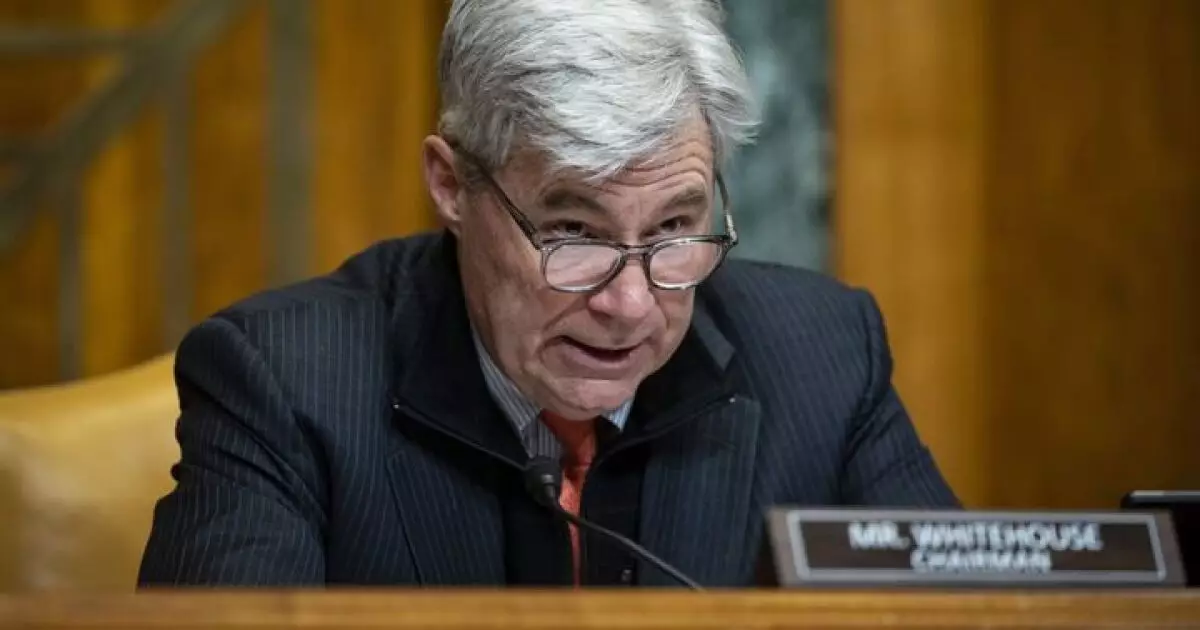In a recent turn of events, confusion stemming from a temporary freeze and subsequent unfreezing of federal funds has cast a shadow over transportation initiatives across the United States. Lawmakers and officials are increasingly frustrated as the implications of the White House’s actions impede plans for crucial infrastructure projects. In an era where bipartisanship is rare, the uncertainty surrounding federal reimbursements highlights systemic issues in the political fabric that governs public projects. Senator Sheldon Whitehouse articulated this frustration at a recent conference, emphasizing the concern over the executive branch’s authority in enforcing laws enacted by Congress. This situation raises important questions about the responsibilities of a President to uphold legislative agreements and the stability of much-needed funding for infrastructure.
Effects on Local Governments and State Initiatives
Despite the federal government rescinding the initial funding freeze, states still find themselves grappling with the fallout. In Rhode Island, for instance, the situation remains unresolved, and many state Departments of Transportation have entered a precarious balancing act between managing existing funds and addressing longer-term challenges. The impending end of funding from the Bipartisan Infrastructure Law, set to conclude in September 2026, adds pressure to state and local governments already concerned about the reliability of federal assistance. While many stakeholders at the conference voiced opinions on how infrastructure projects should be financed, a common theme emerged: the need for a more streamlined and predictable funding mechanism.
As stakeholders and policymakers push for reauthorization of comprehensive infrastructure legislation, debates are emerging about the direction of proposed funding. Proposals vary widely, with discussions hovering between maintaining traditional definitions of surface transportation—which include highways, rail, and transit—and broadening the scope to incorporate new facets like broadband access. Joung Lee, representing AASHTO, expressed a commitment to keeping surface transportation as the backbone of any new infrastructure bill. The ongoing tension between ensuring broad access to funding and maintaining simplicity in fund allocation reflects deep-seated challenges that have pervaded discussions around infrastructure financing for years.
A significant point of contention involves the reliance on discretionary grants outlined in the Bipartisan Infrastructure Law, particularly as stakeholders express a preference for formula funding through existing programs. The complexities associated with grant applications often lead to slowdowns in project execution, resulting in delays that hinder the implementation of vital infrastructure improvements. Garrett Eucalitto, the president of AASHTO, articulated the frustration with the lengthy and resource-intensive process of securing individual grants. Many in the transportation sector feel that the focus should shift towards a more efficient system that prioritizes straightforward allocation of funds rather than mired bureaucracies that leave crucial projects in limbo. This sentiment echoes throughout various levels of government, with even certain Republican lawmakers advocating for a reevaluation of grant programs that do not deliver effective results.
Confronting the Highway Trust Fund Dilemma
As the Highway Trust Fund nears depletion, projected to run out of funds by 2027, policymakers face a critical juncture. The shifting landscape induced by the rise of electric vehicles (EVs)—which contribute less to traditional fuel tax revenues—complicates the funding crisis. The new Department of Transportation Secretary, Sean Duffey, made headlines with a memorandum designed to ease corporate fuel economy standards, signaling a potential pivot away from stringent regulations deemed detrimental to automotive affordability. The implications of this policy shift raise alarms about the long-term sustainability of the highway funding model, especially as the country embraces a future increasingly reliant on electric vehicles.
In light of dwindling federal contributions, states are beginning to implement their own solutions to compensate for the decline in gas tax revenues from an increase in EV usage. A patchwork of user fees and registration surcharges is emerging to address the funding shortfall, illustrating the varied responses states are taking to ensure the viability of their respective transport sectors. Russell McMurry of AASHTO noted that while many states now levy EV fees at the state level, there remains no cohesive national strategy to tackle the issue uniformly.
This fragmentation highlights the urgent need for a collaborative federal-state approach in order to establish a sustainable and equitable system of funding that accommodates the evolving landscape of transportation, particularly in the context of a growing EV market.
The current state of transportation funding is indicative of larger governance issues in the U.S. As officials navigate the complexities of federal funding and authority, it is crucial to recognize the immediate need for coherent policies that support infrastructure improvements. A commitment to bipartisan dialogue and thorough examination of funding strategies will be essential in addressing both the imminent challenges and long-term goals of America’s transportation system. As stakeholders endeavor to secure the future of infrastructure funding, effective collaboration at both federal and state levels will be indispensable.

